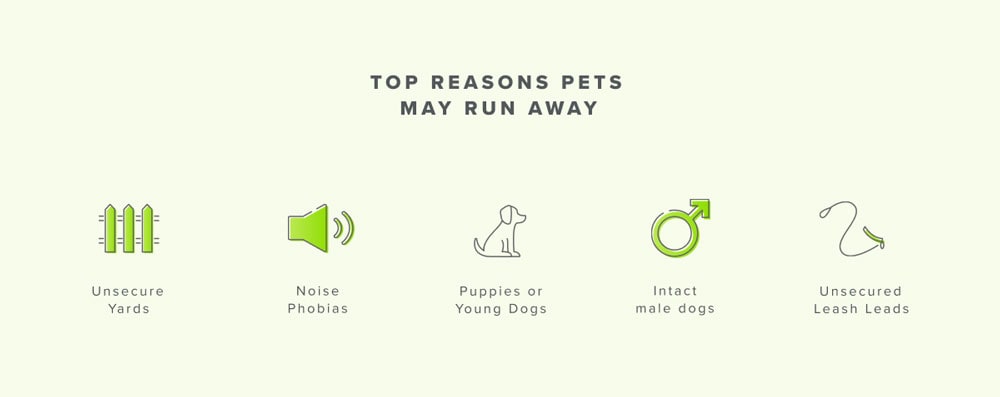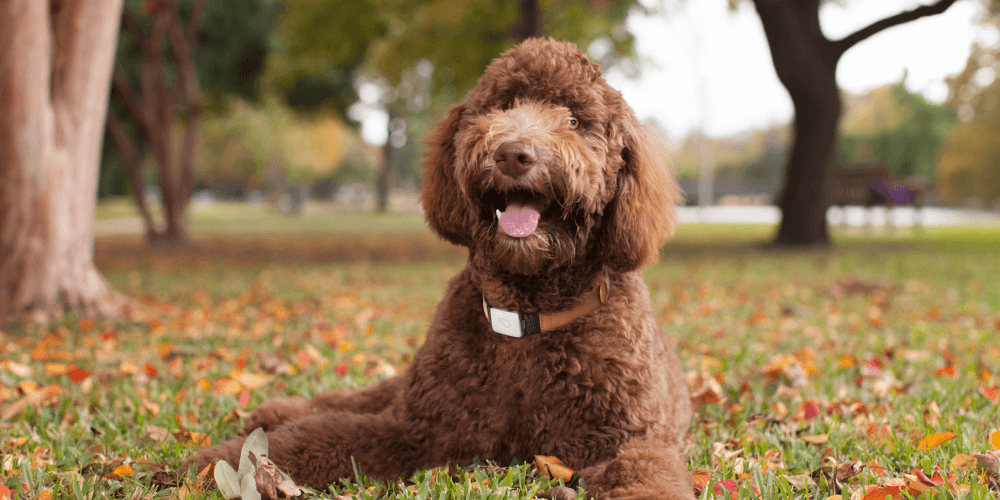See spot run - the top 6 reasons dogs run away

July is Pet Loss Prevention Month, so let’s take a look at the main factors that can contribute to our hairy Houdinis making quick escapes. With 10 million pets going missing every year in the United States, chances are that you or someone you know has had the heart-wrenching experience of losing a pet. It’s as traumatizing for pet parents as it is for their poor lost animals.
Why do pets run away? The most common reasons do not involve the dog being unhappy or even wanting to be away from its owners. Usually our intrepid animals are simply on the hunt for adventure. Certain things can influence a dog’s escape. Some are environmental features, which you can check and remedy around your home. Others are instinctual behaviors, which is good knowledge to have to better understand our dogs’ actions and reactions.
A mix of both environmental and behavioral, here are the 6 main reasons pets tend to bolt:

- Unsecure yards. Some toy breeds can be small enough to squeeze under a gate or dig themselves under a fence. Walk along the border of your yard and search for any breaks, holes, or otherwise weak areas that your dog could get through. Secure your perimeter against canine forces.
-
Noise phobias. Dogs are commonly spooked by loud noises such as car alarms, thunderstorms, and fireworks. Surprise them with any of these sounds, and they’re likely to dash off in fear. The instinct to flee could be so strong that they have extra force to pull out of harnesses or break through walls, doors, and windows. Address noise phobia with behavioral therapy that teaches your pet to overcome the flight instinct. Your vet can point you in the right direction. Pro Tip: Utilize Whistle’s Chat with a Vet feature and ask an expert for tips directly through the Whistle app.
- Untrained puppies. Young pups who haven’t yet learned the rules of your “pack” are more likely to let their curiosity (and their feet) wander after new smells. They may not obey commands off-leash or be accustomed to crates, and it may take time for them to get used to these new experiences. Positive reinforcement of good behaviors and continual practice will help young dogs learn to stay safe at home.
-
Intact male dogs. Dogs, like most animals, are not immune from the hormonal drive to breed. Intact male dogs of all kinds can feel inclined to escape the confines of the home in search of a mate and can end up lost. If you find your pet is impulsively running off to find a mate, spaying/neutering is often the best option to prevent further escapades.
- Unsecured leash leads. The pet world is filled with endless varieties of harnesses, collars, and leashes, but the most important factor in your selection should always be a secure fit. To check that it’s not too tight, make sure you can fit two fingers comfortably between the collar/harness and the dog. Three or more fingers, and your pet will most likely be able to wriggle out when frightened. Checking the snugness on your pet’s collar/harness before each walk is an excellent way to prevent accidental solo adventures.
- Off-leash activity. Let’s face it, we all like to think our pet is the most well behaved dog on the planet, but even the best trained dog can get distracted off-leash. Squirrels, other pets, and humans can draw their attention and trigger them into split-second action. Do your best to stay in tune with your pet’s attention and to keep your communication strong.
Mitigate these 6 factors and you’ll greatly reduce the chances of your dog making a break for it. But for those scary moments when they do dash away, that’s where a Whistle tracker has your back. Just use the Real-Time tracking feature on your Whistle Health & GPS to find them before they get too far away. Then, you can pour love on your pet till the cows come home...because your dog already is.













